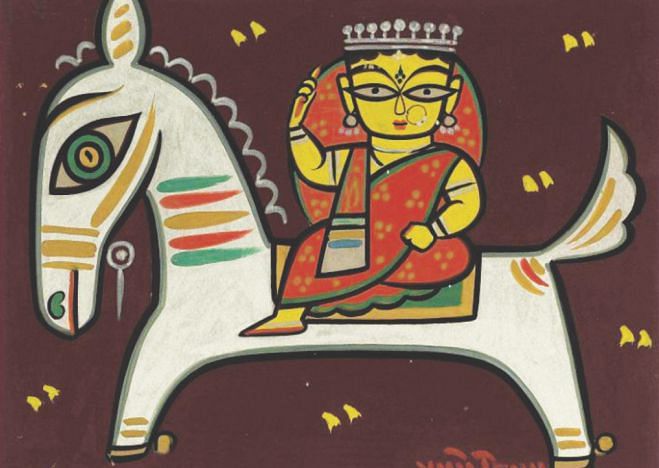Jamini Roy a Bengali artist of Modern India

Today (April 11) marks the 127th birth anniversary of legendary Indian painter Jamini Roy.
Roy was one of the earliest and most significant modernists of the 20th century Indian art whose career spanned nearly six decades. He was one of the most famous pupils of Abanindranath Tagore, whose contribution to the emergence of modern art in India remains undisputed.
Roy was born to a middle-class family at Beliator village in Bankura district of West Bengal. His father Ramataran Roy was an idealist and an amateur artist who, after retirement from government service, spent his life amidst potters, in the village. This environment accrued to Jamini Roy's artistic inclinations during his adolescence. Roy studied in the European academic style at Calcutta Government Art School.
Roy became well known as a skilled portraitist. He received regular commissions after his graduation. However, the growing surge of the nationalist movement prompted all kinds of experiments in literature and the arts. In visual arts, the experiments were clearly manifested with the founding of the Bengal School by Abanindranath Tagore, rejecting European naturalism and the use of oil as a medium.
Roy also rejected the style he had mastered during his academic training. He sought inspiration from sources as diverse as East Asian calligraphy, terracotta temple friezes, objects from folk art and craft traditions. After 20s of the last century, he drew village scenes, rural romanticism and many aspects of pastoral environment. He also did a set of paintings featuring Santhal women. These sensuously painted women are seen engaged in their daily chores, mother and child figures, Bauls and more.
By the end of the 1930s, Roy turned for inspiration towards the folk art and craft traditions of the subcontinent. He painted ordinary rural people, scenes from Krishna Leela, scenes from the epics, icons from the folk cults of the region, along with witty representations of animals. A common feature to be noted in Roy's modernism was the use of bold, vibrant, and dazzling colours. It is interesting that till the 1940s, along with his folk-style paintings, the artist also continued to paint portraits with impressionism in his works. His medium in later years was however tempera. Amazingly, he also made wonderful copies of the European masters.
Roy died in 1972.
Compiled by Correspondent

 For all latest news, follow The Daily Star's Google News channel.
For all latest news, follow The Daily Star's Google News channel. 



Comments